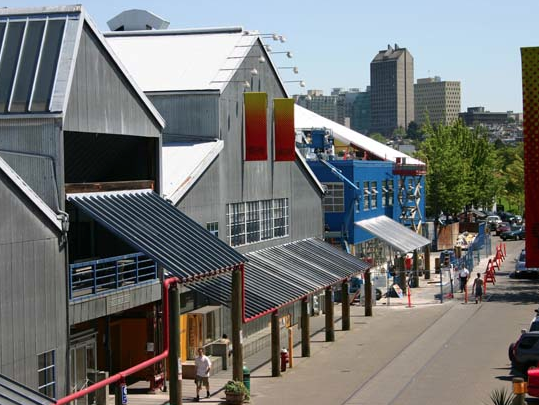The Art of Creativity
Let’s assume for a moment that everyone is capable of being creative. This is a fair assumption based on an egalitarian model of human development. To varying degrees, people respond to complex situations in very creative ways. But is this enough to make the suggestion that everyone can translate creativity into expressive forms with the power and import of art?
Emily Carr University of Art + Design
For example, art schools are hotbeds of creative engagement and, wherever they are available, their community based creative courses attract a wide variety of the populace. Most people I speak to have a deep attraction to art and to artists. Many individuals harbor a secret desire to become artists. The same is true of the attraction to writing. One thing that is often forgotten in discussions of the period of history we live in is that the proliferation of web sites and blogs is perhaps one of the best indicators of the universal desire to create and communicate. This desire crosses national boundaries, class differences and religions.
The questions that flow from this seemingly superficial assumption about the universal desire to be creative are many, but among the most important is what do we mean by creativity?
First and foremost, creative engagement means producing something new and, most importantly, engaging with the world through less linear and unpredictable means than the constraints of everyday life often allow. The ephemeral nature of discovery combined with excitement of working with ideas and materials, encourages fluidity of thought and an almost child-like excitement about simple acts like shaping paper into a sculpture or creating movement from drawings that are still.
Artists are compelled to create. Their lives are burdened by the fact that there are rarely any alternatives to the depth of desire that they feel — the physical and mental need to explore their chosen craft or medium. Most writers cannot pass a day without engaging with words and sentences. Yet, not everyone is a writer or artist.
So, although everyone is capable of being creative, very few exercise their talent to the point of making creative engagement the centre of their lives. This is because the translation of creative desire into forms or materials requires a further step beyond the spontaneous production of artifacts. The secondary act of speculative and critical thinking that needs to be applied to creative production requires a profound understanding not only of history, but also of our place in history.
Painters come to an intimate understanding of the materials they use in the context of the history of art. The intellectual work that is necessary here far exceeds popular notions of spontaneous inspiration. Take a hard look at the many letters which Vincent Van Gogh wrote, and you see a man devoted not only to explaining his art but also to communicating his intentions. Alternately, take a look at the many letters that Samuel Beckett wrote, and you become a witness to his intense and sometimes violent need to communicate his views of the world.
In all of this, art is produced through action and reflection, through interchange and community. Practice, repetition and rigour transform working with materials, ideas and media into complex acts of communication.
Creativity is therefore about more than what we do or how we think. It is about the application of knowledge to the production of artifacts, ideas and even moments in time. Everyone can be creative, but not everyone wants to spend the time and energy engaging with the demands that creative production requires.

